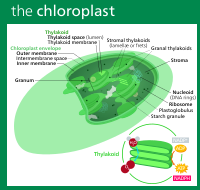
Photo from wikipedia
Background3D segmentation is often a prerequisite for 3D object display and quantitative measurements. Yet existing voxel-based methods do not directly give information on the object surface or topology. As for… Click to show full abstract
Background3D segmentation is often a prerequisite for 3D object display and quantitative measurements. Yet existing voxel-based methods do not directly give information on the object surface or topology. As for spatially continuous approaches such as level-set, active contours and meshes, although providing surfaces and concise shape description, they are generally not suitable for multiple object segmentation and/or for objects with an irregular shape, which can hamper their adoption by bioimage analysts.ResultsWe developed LimeSeg, a computationally efficient and spatially continuous 3D segmentation method. LimeSeg is easy-to-use and can process many and/or highly convoluted objects. Based on the concept of SURFace ELements (“Surfels”), LimeSeg resembles a highly coarse-grained simulation of a lipid membrane in which a set of particles, analogous to lipid molecules, are attracted to local image maxima. The particles are self-generating and self-destructing thus providing the ability for the membrane to evolve towards the contour of the objects of interest.The capabilities of LimeSeg: simultaneous segmentation of numerous non overlapping objects, segmentation of highly convoluted objects and robustness for big datasets are demonstrated on experimental use cases (epithelial cells, brain MRI and FIB-SEM dataset of cellular membrane system respectively).ConclusionIn conclusion, we implemented a new and efficient 3D surface reconstruction plugin adapted for various sources of images, which is deployed in the user-friendly and well-known ImageJ environment.
Journal Title: BMC Bioinformatics
Year Published: 2018
Link to full text (if available)
Share on Social Media: Sign Up to like & get
recommendations!